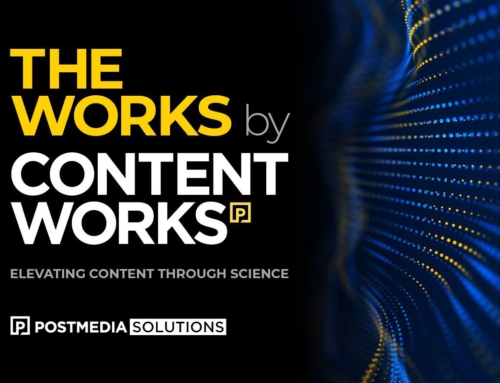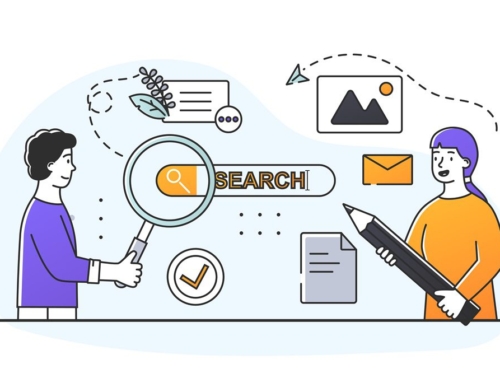Programmatic advertising uses technology to automate the process of buying and selling online advertising. For brands, it’s a game changer. It allows for more precise targeting, improved efficiency and increased ROI, and ensures the right messaging reaches the right audience at the right time.

Algorithms and automation are the critical technologies at the core of the programmatic advertising ecosystem – the next evolution in the world of digital advertising.
By automating the buying and selling of online ads, you can gain efficiencies, cut costs, boost return on investment (ROI), collect greater insights about your customers and, most importantly, target the right audience at the right time.
In this ecosystem, advertisers use demand-side platforms (DSPs) to automate ad buying and publishers use supply-side platforms (SSPs) to automate selling their advertising space. Ad exchanges are the digital marketplaces connecting the two. In the background are data management platforms (DMPs), which collect, organize and leverage first, second and third party audience data from online, offline and mobile sources to build highly detailed customer profiles. These anonymized customer profiles are then shared with DSPs, SSPs and ad exchanges to customize content, improve targeting and enhance the overall effectiveness of ad campaigns.
Two critical benefits of programmatic advertising
- Programmatic advertising ensures your ads reach the most relevant audience, resulting in a stronger ROI for publishers and brands.
- Programmatic advertising gives you more control over who sees your ads and allows you to target a wide range of platforms, including mobile, digital out of home, display, video, audio and connected television channels.
Fast fact: In 2023, global programmatic ad spending hit an estimated US$558 billion and is on track to exceed US$700 billion by 2026.
Understanding the programmatic advertising ecosystem
What is a demand-side platform and how does it work?
A DSP is a digital advertising tool that makes the ad buying process faster, cheaper and more effective. It does this by allowing advertisers and ad agencies to bid automatically and in real-time on display, video, mobile and search ad inventory from a range of publishers. One of the most significant advantages of using DSPs is precision targeting for ad placement. The platform allows ad buyers to set out targeting criteria, such as users’ locations and past browsing behaviour, pricing, frequency and other important details as well as the ability to manage multiple exchange accounts using the same interface. Ad buyers are not limited to buying inventory on any one publisher’s site. In some cases, a DSP will also provide performance data allowing advertisers to adapt campaigns in real time. DSPs represent an important evolution of ad networks, which have been incorporating real-time bidding and other capabilities in their offerings.
Tip: Google Display & Video 360 is a leading DSP noted for its expansive reach. Users have access to all of Google’s properties, including YouTube and Google Display Network. Choosing the right platform comes down to assessing a few key factors: advertising goals, ad formats and, in some cases, industry.
What is a supply-side platform and how does it work?
An SSP is a technology that allows website owners/publishers to monetize and manage the advertising space on their websites. It does this by automating the selling process to increase efficiency and drive revenue. It connects publishers to multiple DSPs and ad exchanges, and serves the ads, sets price floors and evaluates bids.
Tip: Ad Exchange in Google Ad Manager is one of the most popular SSPs with publishers because of the large number of high-quality advertisers you can reach, higher cost per thousand (CPM) and the ability to fill more ad space in less time. To be eligible for an account, a publisher has to have 5 million monthly page views and a minimum of 10 million monthly ad impressions for six months. Other notable SSPs include OpenX, Magnite and Pubmatic.
The differences between DSPs and SSPs
While DSPs and SSPs work together to facilitate the streamlined buying and selling of digital advertising and share a few key similarities (such as the use of automation, the provision of targeting capabilities, analytics and reporting tools), they are not the same. In addition to serving different users (advertisers vs. web publishers) and roles, they also have other important traits that differentiate them, including:
- Technology. DSPs rely on algorithms to ensure precise targeting and ad placement.
- Location. DSPs can exist as standalone platforms or they can be integrated into an advertiser’s marketing/advertising technology stack. SSPs are integrated into a publisher’s ad server or ad management platform.
- Pricing. DSPs charge fees for their services. This can take the form of a predetermined flat monthly rate or a percentage of ad spending. Some DSPs may also have another revenue stream: selling data about user demographics and behaviour to advertisers and third parties. SSPs typically earn a percentage of the revenue from each ad impression sold. Some also charge additional fees for premium services and features.
What is an ad exchange and how does it work?
An ad exchange is a digital marketplace where advertisers and publishers (website/app owners) buy and sell advertising inventory, such as display, video and mobile ads, across a range of channels (websites, mobile sites and mobile apps). Publishers offer advertising space that brands, advertising agencies and ad networks can buy to publish their display, video and mobile ads. Ad exchanges make the buying and selling of digital ads more transparent, optimize the buying process and maximize profits. Advanced algorithms allow publishers to sell to the highest bidder, ensuring they get the best price for their ad space. Advanced algorithms also help advertisers to reach high intent audiences with the content they need when they need it.
To make this happen, ad exchanges connect DSPs used by advertisers and agencies to automatically buy ad space with SSPs used by publishers to automatically sell ad space. The exchange provides the advertiser with information about the publisher’s digital property as well demographic information about its users. Pricing is determined through real time bidding, which occurs between the platforms when a user visits a website or app. As ad space is sold, an ad is instantly displayed and the publisher is paid.
SSPs, DSPs and ad exchanges are the core of the programmatic buying ecosystem and represent the future of ad buying. Postmedia offers both buy side programmatic trade desk solutions and sell side publisher inventory programmatic marketing solutions. Book a consultation to learn more.

